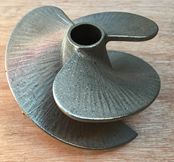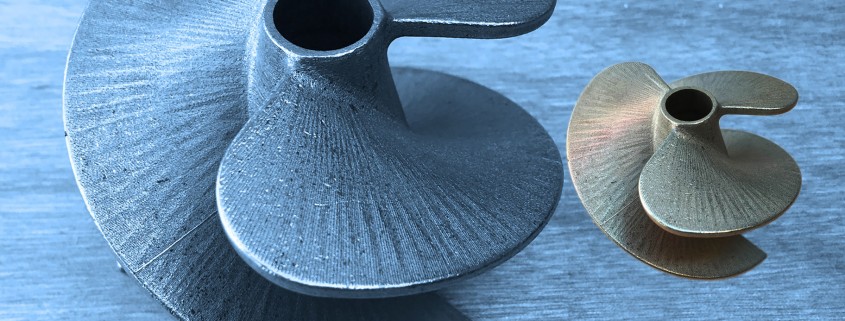
3D printed screw
This summer 27 companies active in the Port of Rotterdam are studying whether 3D printed ship spare parts can meet the strict requirements for maritime shipping. The NLR is conducting the tests.
The maritime consortium will 3D print and test various ship spare parts, including screws, washers and liquid conductors, with the results due in late September. The consortium engaged the NLR because of its comprehensive knowledge and experience, both theoretically and experimental, with 3D printing of metals and composites for the aviation and aerospace sector.
The initiator is InnovationQuarter, the South Holland regional development company, in partnership with the Port of Rotterdam Authority and RDM Makerspace. In this ‘3D printing of maritime spare parts’ pilot project, four parts will be 3D printed and tested in a short period of time. Recently, the participating partners signed a consortium agreement.
Spare parts locally printed
The NLR will test the spare parts for the functionality and integrity (including stability, stiffness, strength) of the products. A determination will then be made as to whether the spare parts meet the standards in place for practical application. At certain times speed may also be a crucial requirement: for example, when a ship is in a port on the other side of the world and needs to have a spare part 3D printed locally.
The focal points of this project are the research and collaboration between all the various parties. Paul Arendsen of the NLR: “This is a great way for the NLR to gain knowledge and experience of testing procedures in the world of maritime shipping.”
3D printing in practice
In addition to researching the economic benefits and feasibility of 3D printing, the project partners are also creating a database. This database will offer a helping hand to maritime companies in terms of selecting materials, manufacturing methods and post-production processes. It also offers the participants the opportunity of benefiting from the possibilities afforded by this new technology in a concrete, focused and practical manner.
Presentation during World Port Days
The actual 3D printing of the spare parts will be done in July and August of this year. The parts will then be tested in September, with a report to follow. The progress report for the project will be presented during Rotterdam’s World Port Days, in early September. The findings will be presented during a 3D printing conference held in the Port of Rotterdam Port in autumn 2015.


